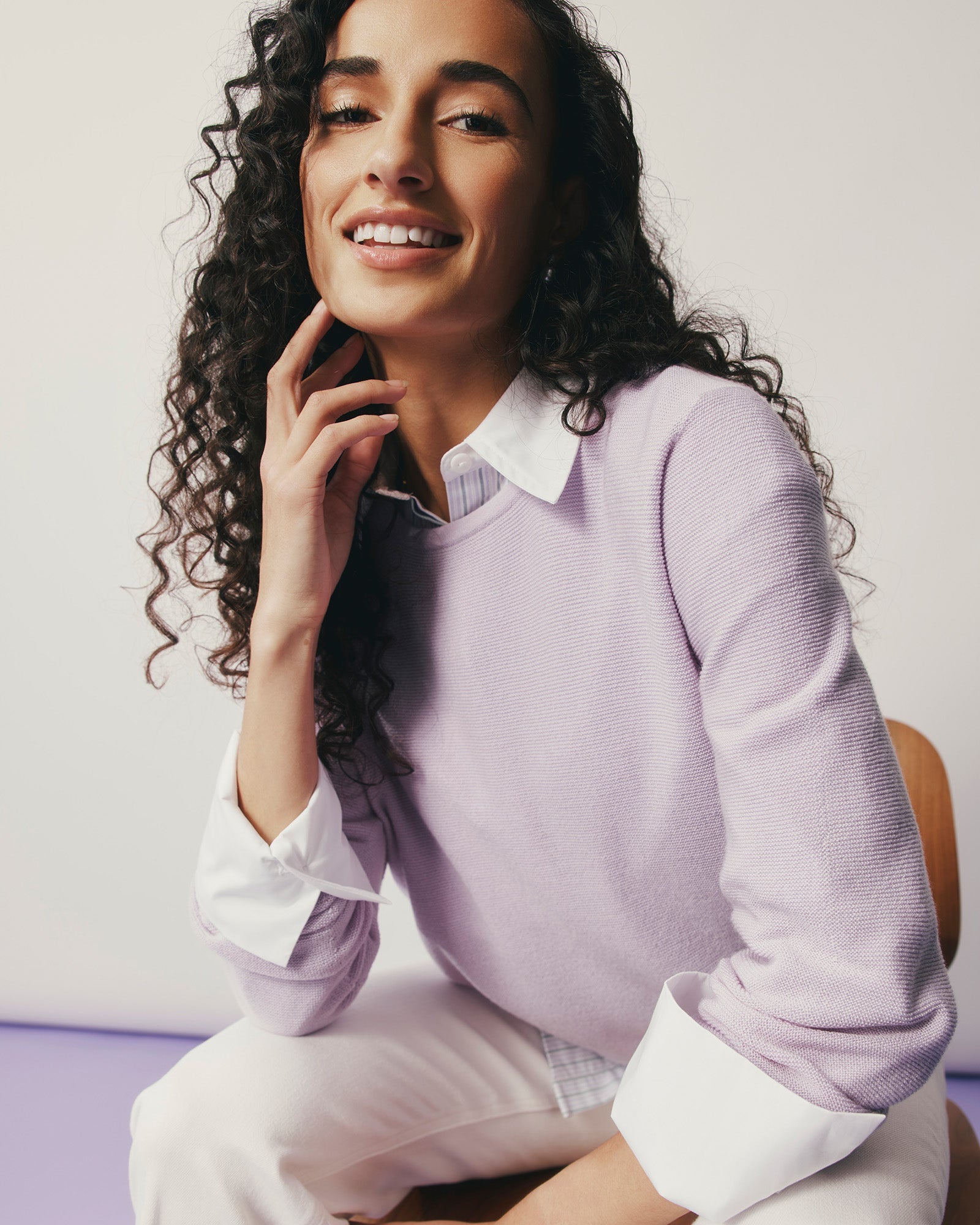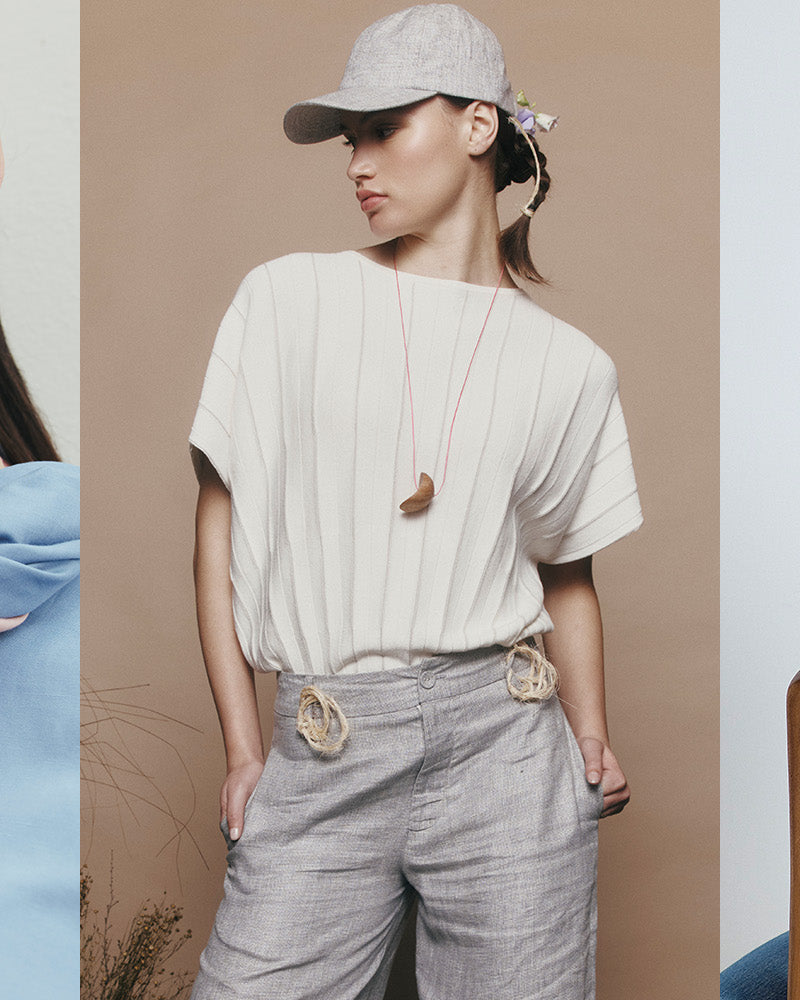The Creative Shift Towards Circular Fashion
When we partnered with sustainability influencer Besma, she selected this season’s Myrtle Blazer to feature on her channels. Besma's blog, Curiously Conscious, documents kinder ways to live and dress so her choice of a garment made from deadstock fabric prompted an interesting discussion about it's use.
Deadstock fabric is the leftover textiles from other brands or mills, often surplus from overproduction or cancelled orders. Rather than sending it to landfill, we give it a second life. It’s a simple idea that feels good on the surface, but there’s a deeper conversation to be had.

For brands like us, who want to use what’s in existence where possible, deadstock is a logical choice. It also allows us to extend our range without having to over-order fabric to meet minimum requirements. The sacrifice is that when a garment is particularly popular, such as our Barron Overshirt, we’re not able to make more. For us, this is outweighed by the environmental benefit of diverting fabric from landfill.
By using deadstock, we help reduce waste. What it does raise, is a question over whether it also means the companies who over-ordered in the first place might not have to face the consequences of their choices.
There’s a balance to strike, between making use of what already exists and holding space for accountability in the industry. What does responsibility look like when it comes to waste? We only use the highest quality deadstock, from our trusted suppliers, but what happens to the surplus low-quality fabric that’s produced?

In an ideal world there would be no deadstock to use. But until then, we take pride in consciously creating beautiful garments that you will love for generations, from fabric which otherwise would have become another environmental problem.















